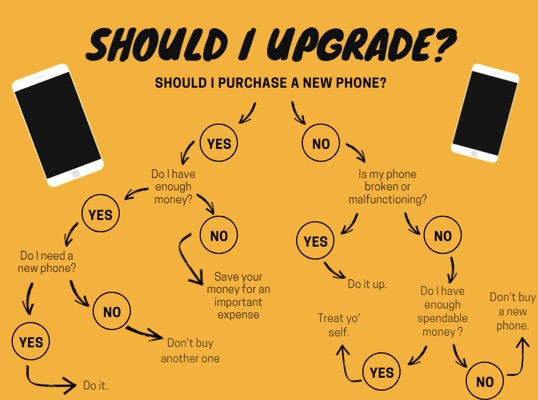4 Easy Decision-Making Trees That Make You More Efficient

I’m going to be honest with you. I wasn’t always the most efficient person, either at home or at work. I used to say I work best under a short deadline, but in reality, I was once the queen of procrastination and left things until the last minute. Then, predictably, I scrambled to get them done.
Since then, I have tried many different ways to make me more efficient. By far and away, the best tool I’ve used is the decision tree.
If you’ve struggled with your own lack of productivity and procrastination, then dig in for some decision tree magic:
What is a decision tree?
In layman’s terms, decision trees are the easiest and most efficient way to plan. It’s a set of either/or questions that help you take action.
It works because it helps take some of the weight off your mind—you don’t have to entertain every idea at once. Instead, you can write them all out, analyze each possible outcome once they’re out of your mind, and make the best decision from there.
The nicest thing about decision trees is they aren’t just for work. You can use them for everything—even banal things like choosing which color will look best on the walls of your living room or where you should go for dinner.
How do decision trees make you more efficient?
Before we dig into the efficiency factor, I need to introduce you to another concept—decision fatigue.
We all make hundreds of decisions every day. Do we wear the black shirt or the blue one? Do we take the interstate or the back roads to work? Do we pack a lunch or eat out?
Making so many decisions every single day is exhausting, but we do it anyway because for most of us, it’s as natural as breathing. If you’re having problems with efficiency, this decision fatigue can be the straw that breaks the camel’s back. In a cutthroat corporate world, that’s the last thing you need.
These decisions don’t just have to be about things you do, either. They can cover everything from your personal stance on politics to your preference for office chairs.
For example, you can use a decision tree to weigh the cons and pros of being sustainable at the office. You might think, “Printing less paper could reduce landfill waste, but I think better on paper.” So, you can break it down on a decision tree. Should you work primarily on your laptop or continue printing your meeting notes?
You can break nearly every decision at work down with a decision tree. (Except the one about whether you should make a new pot of coffee if you take the last cup. The answer to that is always “yes.”)

The decision-making tree in action
Is the decision-making tree the best efficiency tool?
While decision trees have been a blessing for me, are they really the best way to plan? Before you make your selection, let’s take a look at some of the other decision-making tools available to you, including:
- Flowcharts — These are basically decision trees turned on their side, so if you prefer to work horizontally rather than vertically, a flowchart might be a better option for you.
- Decision matrix — This matrix is a decision tree in the form of an Excel spreadsheet. If you have a lot of numbers to consider, it can be an excellent tool to help you keep everything straight.
- T-Chart — These are decision trees with two branches, allowing you to break down your decisions into pros and cons.
- SWOT — If this acronym sounds like Millennial or Generation Z slang, hear me out. This analysis allows you to break down your decisions into four categories — strengths, weaknesses, opportunities, and threats. So basically, it’s a decision tree with extra either/ors.
The purpose of all these decision-making tools is to allow you to entertain all possible outcomes before making a decision in a way that minimizes external pressure.
And while I love the basic decision-making tree for my own purposes, the variations I mentioned above might work better for you. Try them all, then stick with the one that really clicks.
One last note: I don’t use decision trees for every little thing I decide to do, but they have taken a lot of the stress off me. They have made me more efficient in daily life and decluttered my decision-fatigued mind. If you choose to stick with a particular decision-making tree, just don’t overuse it—you might find that it adds pressure instead of reduces it.
Use your decision-making tree to determine the #1 priority in your customizable Morning Routine…
Sign up now to get our FREE Morning Routine guide—the #1 way to increase productivity, energy, and focus for profitable days. Used by thousands of fitness, business, and finance industry leaders to leapfrog the competition while making time for the people who really matter. Learn more here.
